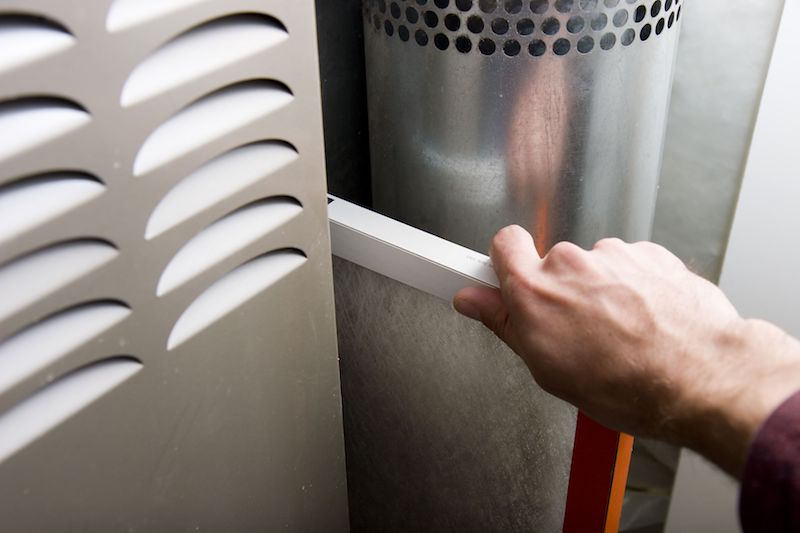
If you’re unsure whether your East Bernard house has bad indoor air quality (IAQ), it possibly does.
We are indoors a lot. As a matter of fact, we’re in a building up to 90% of the time, according to the U.S. Environmental Protection Agency. And the air inside homes could be 2–5 times worse than outdoors, which can create long-term health concerns.
Most Common Causes of Unsatisfactory IAQ
We’ve put together a list of the most frequent causes of poor IAQ, the problems they make and how you can fix these indoor air pollutants. If you’re worried about the air inside your home, we suggest chatting with a expert like E.B. Air about which solutions are best for your home.
Volatile Organic Compounds
Volatile organic compounds, or VOCs, are chemicals released by common household things.
They’re found in paint and stains as well as:
- Furniture
- Carpet
- Building materials
- Cleaning products
- Cosmetics
- Air fresheners
- Candles
When these fumes accumulate in your home, they may irritate your eyes, nose and throat. They might also result in headaches and nausea. Regardless of whether your house is in a rural or industrial location, an EPA study found indoor levels of these pollutants can be 2–5 times worse than the air outside.
Always use the manufacturer’s guidelines when applying paint or spraying cleaning products. Cracking a window can help chemicals dissipate faster.
Air purification systems can also make it better. This equipment partners with your heating and cooling unit to freshen indoor air. When looking for a model, ensure it’s specifically made to eradicate VOCs.
Dust and Pet Dander
Dust and pet dander can aggravate health problems like asthma and allergies, especially when it continually gets redistributed by your home’s comfort system. While you can vacuum more routinely and buy an improved air filter, an air filtration system could be a better match.
This unit hooks to your HVAC equipment to give mighty filtration. Some kinds offer hospital-level filtration for eliminating particles and bioaerosols.
Lasting Odors
Modern homes are tightly sealed to increase energy efficiency. While this is great for your heating and cooling bill, it’s not so good for your IAQ.
Musty odors can stay around for a greater amount of time because your residence is pulling in less fresh air. As keeping your windows open all the time isn’t a possibility, here are two methods you can make your indoor air smell fresher.
An air purification system is installed in your HVAC system to eliminate odors before they are redistributed. Look for one with a carbon filter and the ability to eliminate damaging VOCs. These systems can also help keep your loved ones healthy by eliminating most bacteria and ordinary allergy triggers like pollen and mold spores.
A ventilation system removes stuffy indoor air and substitutes it with clean outdoor air. There are two types of units (heat recovery and energy recovery), so ask our professionals for more details on which type is right for your home.
Uneven Humidity
It’s important your residence’s humidity keeps even. Air that’s too moist can lead to mold, while dry air can cause respiratory concerns.
Our pros suggest 40–50% for the best comfort. To keep yours in balance, think over getting a whole-home humidifier or whole-home dehumidifier with your comfort system.
Rather than having to lug a humidifier from room to room, this product delivers balanced humidity across your house.
Carbon Monoxide
Carbon monoxide is colorless gas you can’t smell. It occurs when there’s insufficient combustion in fuel-burning appliances, like gas heating systems, water heaters or fireplaces.
It presents a severe health risk. In low levels, it can create flu-like symptoms like headaches and nausea. It can be fatal in heavy amounts.
We suggest yearly furnace maintenance to double-check your unit is running smoothly. This job allows our technicians to find problems before they get bigger, including malfunctions that can lead to carbon monoxide leaks.
The best approach to keep your home free of carbon monoxide is to install detectors. These alarms must be on every floor by bedrooms and living spaces.
Enhance Your Home’s Air Quality with the E.B. Air Specialists
Informed that your residence has bad air quality but not sure how to enhance it? Or unsure which solution is a good fit for you? Give our approachable HVAC pros a call at 979-335-4262 or contact us online now. With free estimates and professional service, we’ll help you find the right option for your needs and budget.
